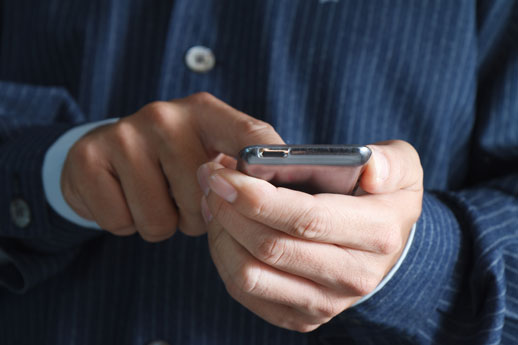ANZ Banking Group says its recent deal with Apple to provide Apple Pay in Australia has sparked a surge in applications for credit cards and deposit accounts, which has forced the other major banks to re-enter negotiations with the technology giant.
The main sticking point continues to be how to divide up the billions of dollars of fee income banks earn from processing payments.
ANZ chief executive Shayne Elliott said at the bank’s interim results last week that online credit card applications were up 20 per cent since the deal with Apple was announced on April 28.
On that day, online deposit applications were the highest on record – more than double the average – Mr Elliott said and “that higher level [is] continuing”.
It is understood that under strict confidentiality agreements imposed on ANZ by Apple, the bank is not able to disclose how many of its Visa debit and credit cards have been loaded up onto Apple Pay.
But ANZ’s Apple Pay microsite had 61,000 unique visitors over four days, and traffic to the bank’s main anz.com website has been 6 per cent higher than average since the launch.
Mr Elliott said “the vast bulk of this increased activity comes almost purely from social media engagement.”
Of the ANZ customers using goMoney internet banking, 69 per cent have an Apple iPhone, providing “a rich source of existing customers who want Apple Pay,” Mr Elliott said.
“Plus [there is] a vast number of new customers. Whilst it is early days the results have been outstanding.”
ANZ is ramping up its marketing of the deal, using its Apple Pay capability in a television advertising campaign while advertisements are adorning bus shelters around Sydney.
In interviews last week, the chief executives of Westpac Banking Corp, Brian Hartzer, and National Australia Bank, Andrew Thorburn, said negotiations with Apple will continue.
Westpac had struck a deal with Samsung two years ago to offer tap and go on Samsung phones “which is essentially the identical experience” as Apple Pay, Mr Hartzer said.
“It would be nice for us to offer [Apple Pay] in the context of what we are doing but in the end it has to be commercially sustainable. We will continue to talk to [Apple] and other wallet providers and see where we get to.”
Mr Thorburn pointed to NAB Pay, which was launched in January for Android phones and has been enabled by 25,000 customers and processed 100,000 transactions, according to a slide in NAB’s investor pack last week.
“We are going to look at ways to deploy NAB Pay,” Mr Thorburn said.
“We would like to deploy it with Apple. But obviously that is an important conversation that we will have to have with them. We think NAB pay is strong and easily deployable on any device, we just need to work with the providers to get that to be the case.”
Dividing the pie
Apple’s deal with ANZ was reached after the bank agreed to give up some of its interchange fees to Apple, and Apple was willing to compromise and reduce the level of fees it demanded from US banks, but confidentiality agreements imposed prevent discussion of the details.
Australian banks earn around $2 billion a year in interchange fees, which are paid by merchants for use of payments infrastructure.
But the fees are being pushed down by caps that have been imposed by the Reserve Bank of Australia. The major banks reported lower interchange fee income as a result of these measures last week.
The RBA is pushing to lower interchange fees to 30¢ for $100 of transactions, down from 50¢ for $100 of transactions.
In the United States, Apple is believed to earn about US15¢ on every $US100 of transactions. But in the US, the bank interchange fee is $1 for $100 of transactions.
However, given that ANZ debit cards are part of the deal, ANZ may have negotiated a flat fee for each transaction rather than one based on the volume of transactions because debit card interchange fees are flat, in contrast with credit card fees based on transaction volume.




